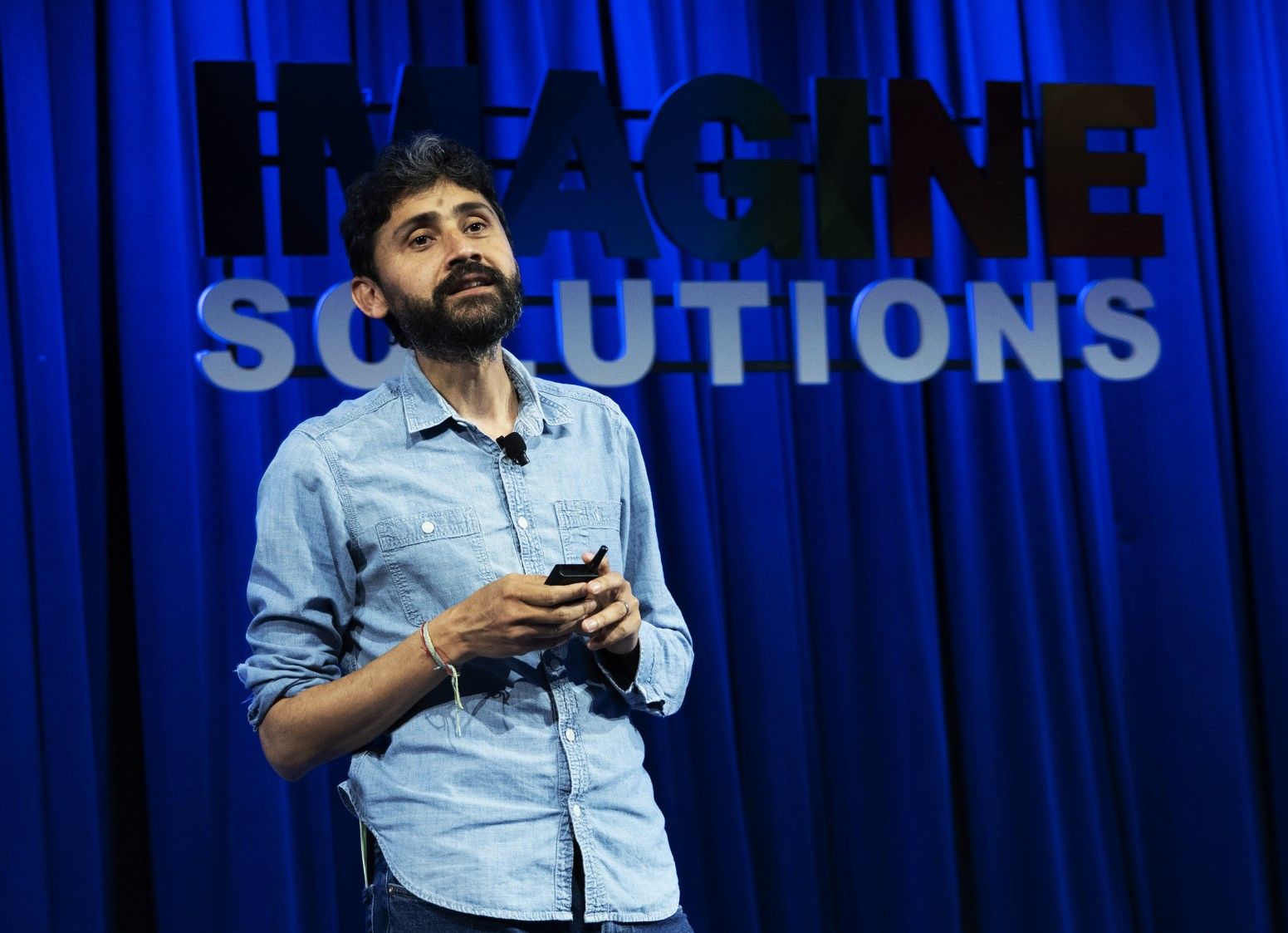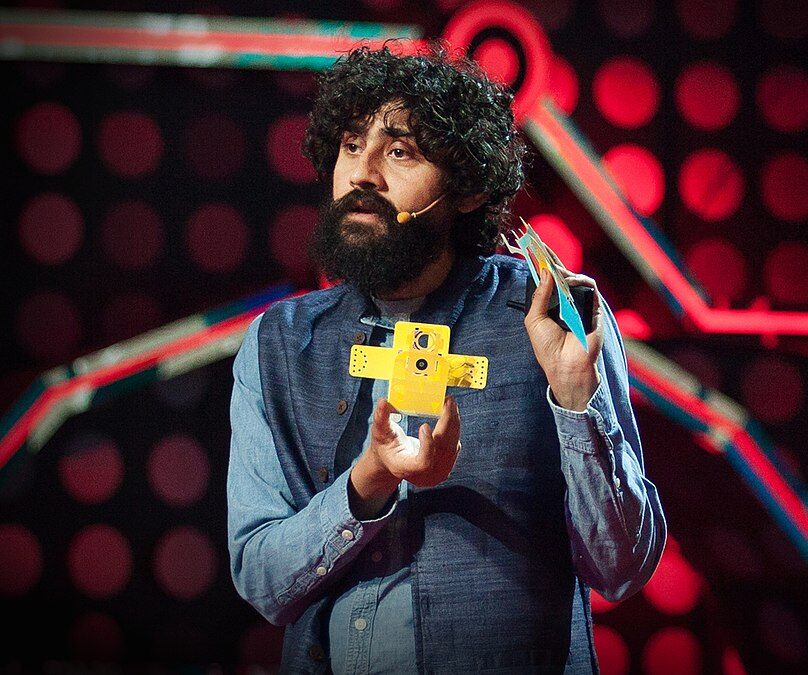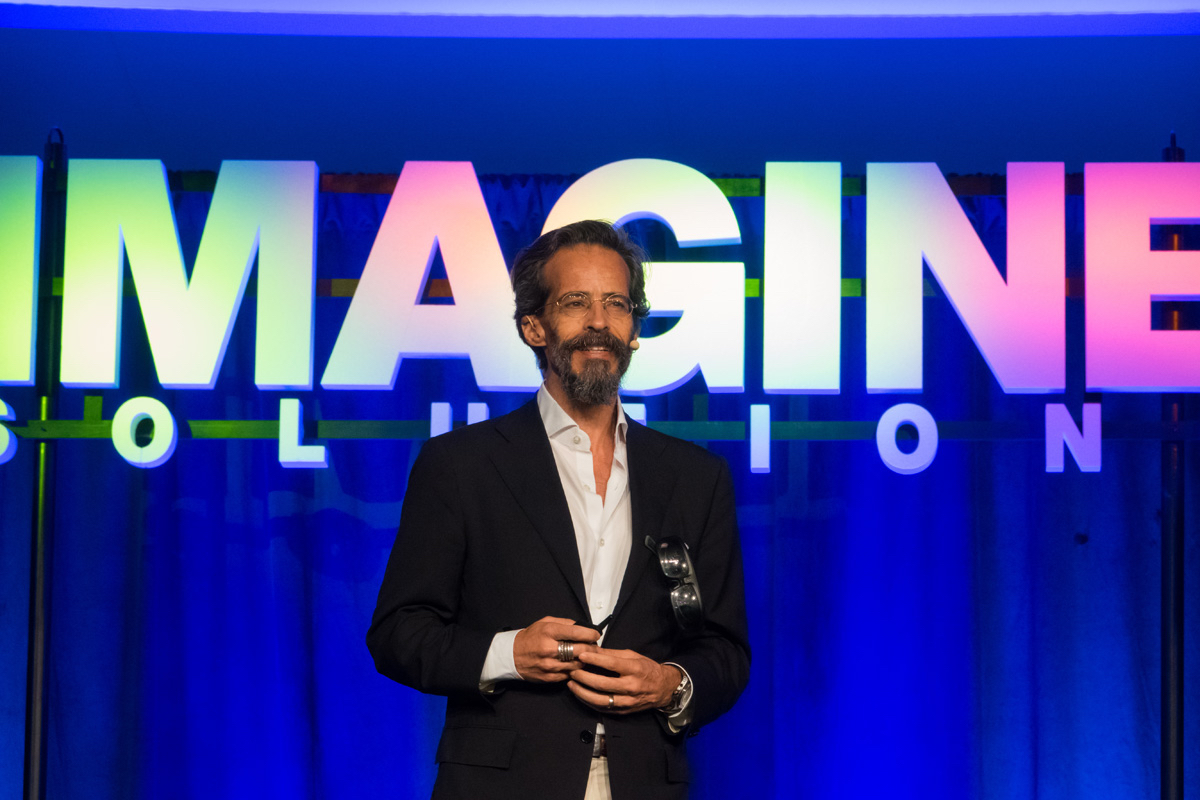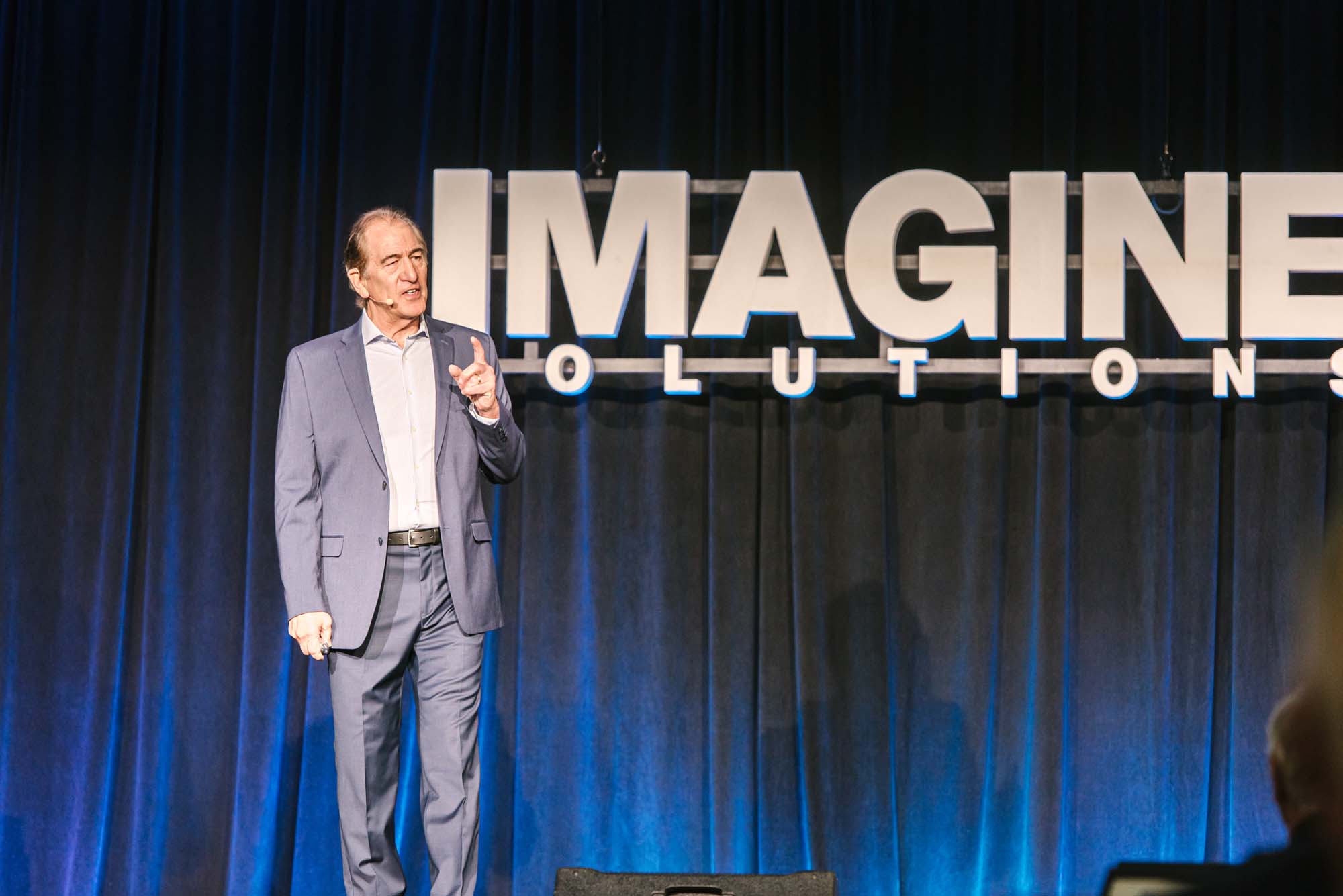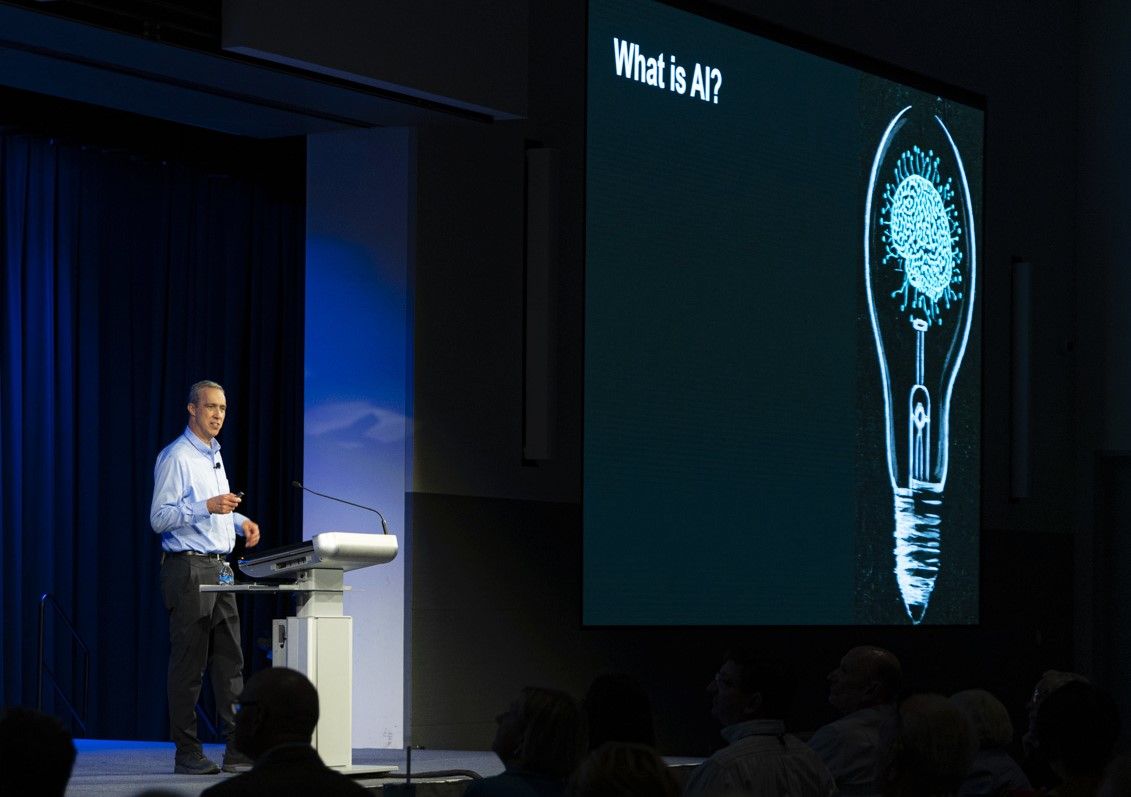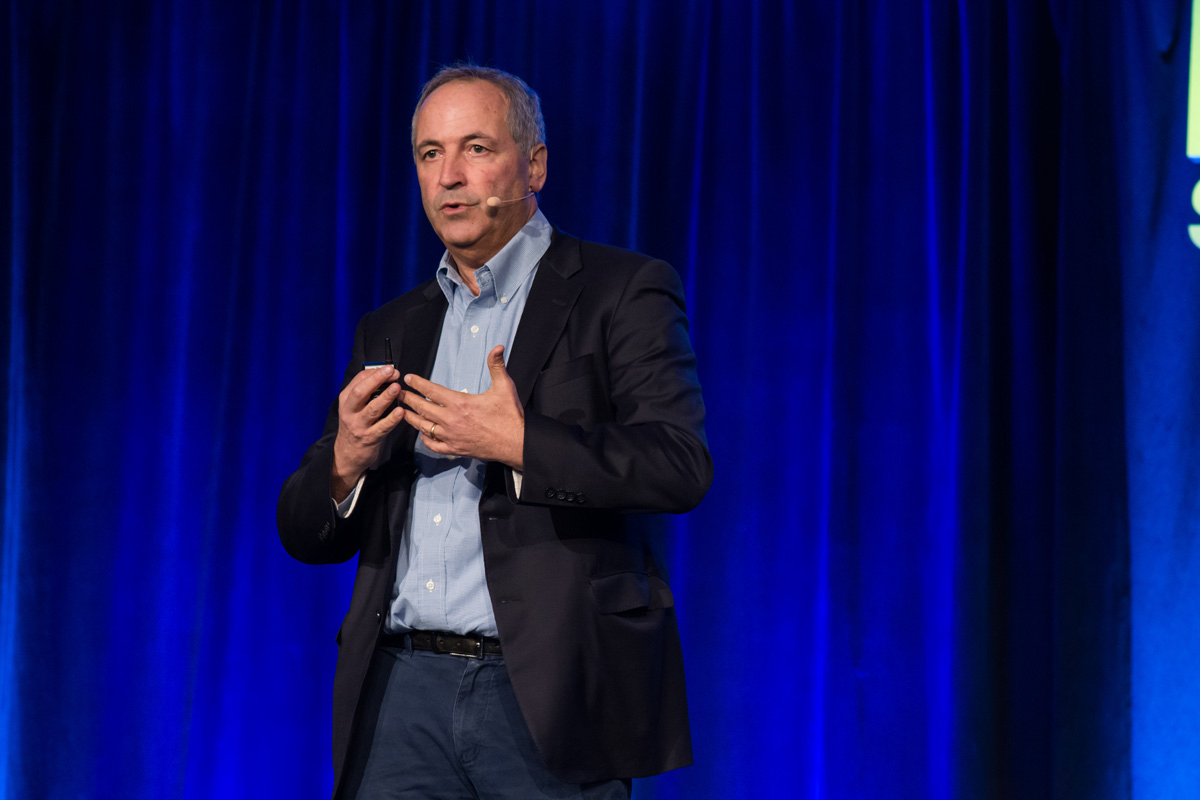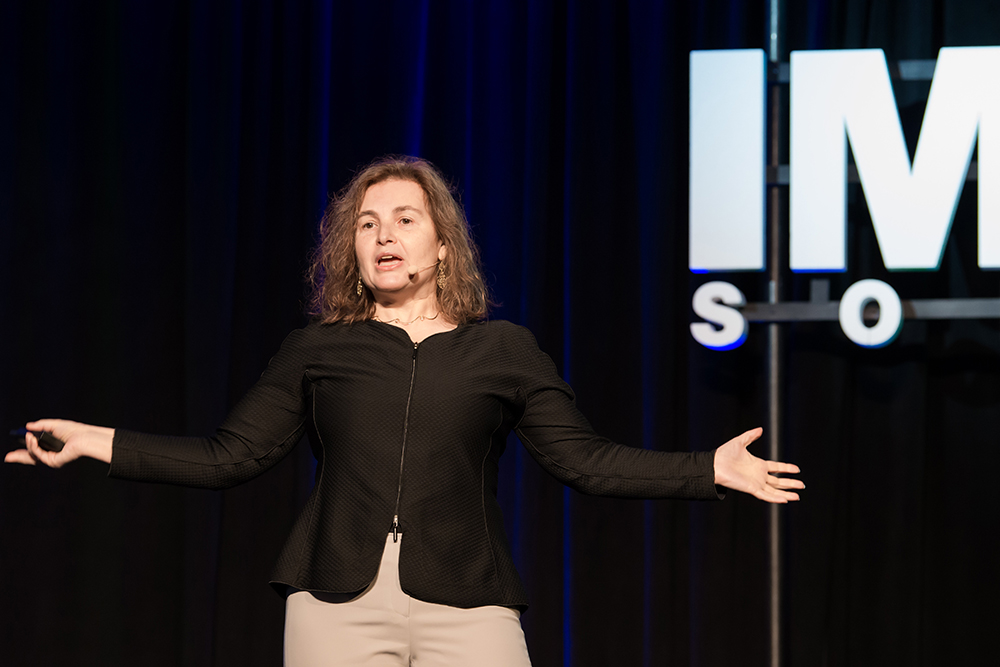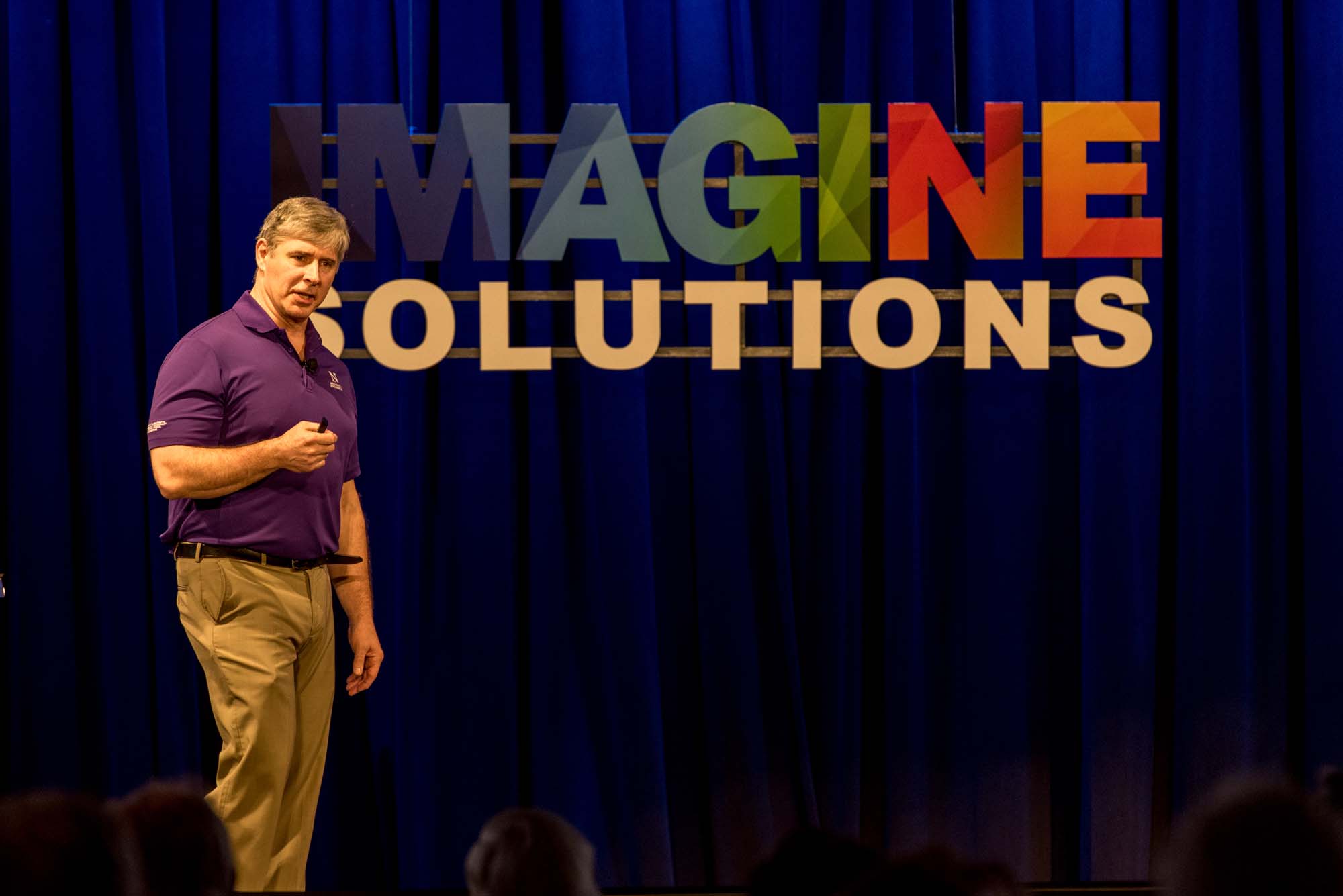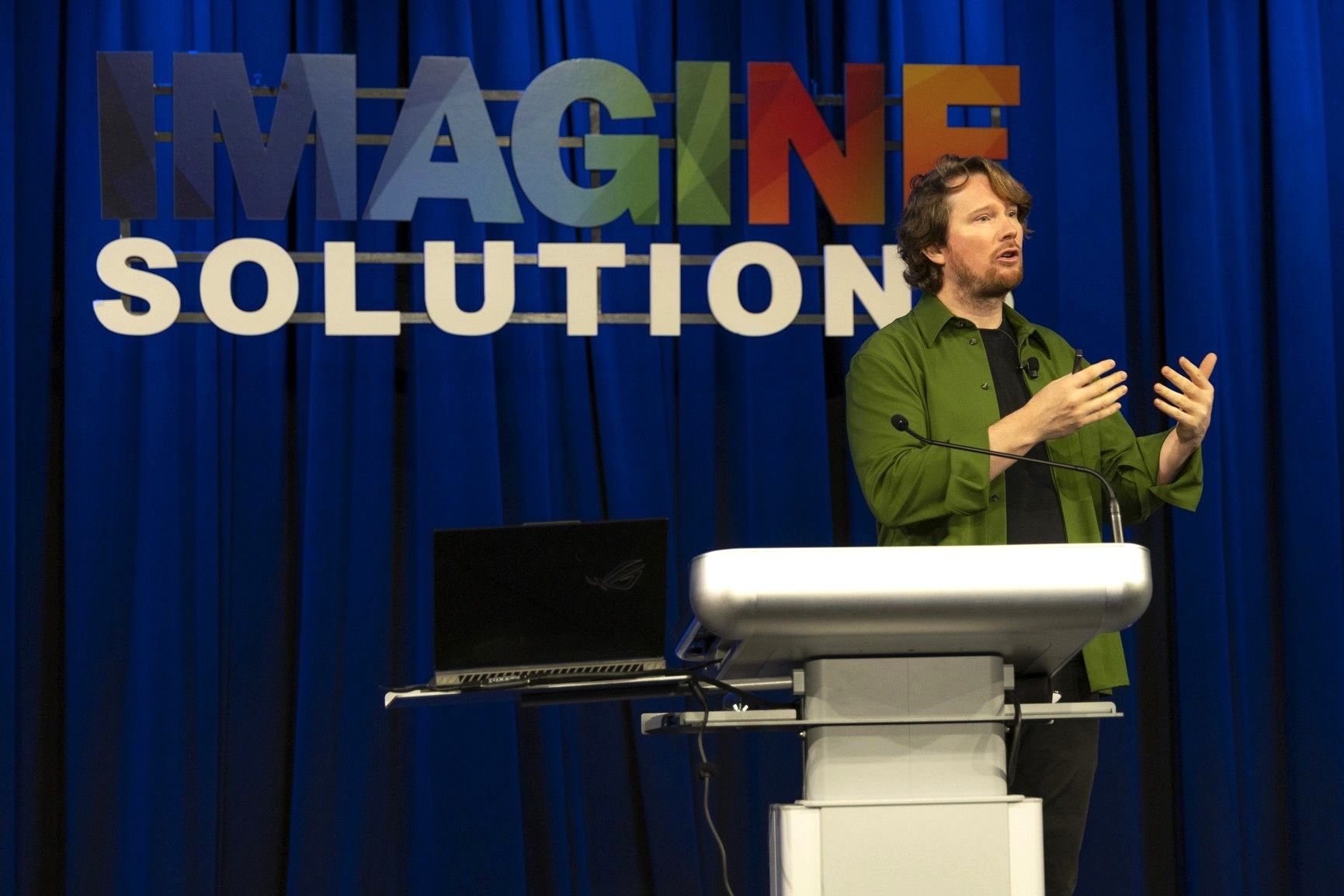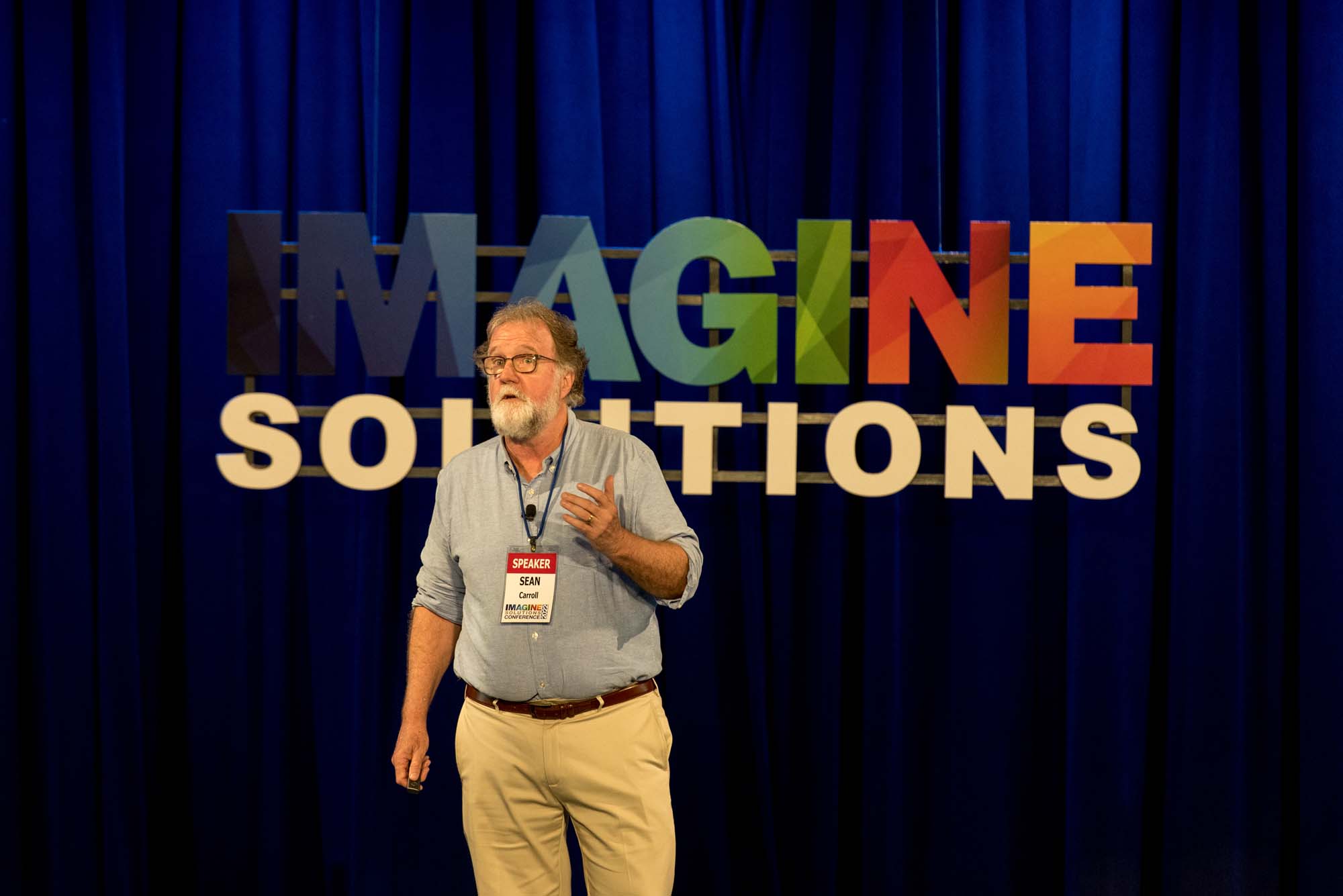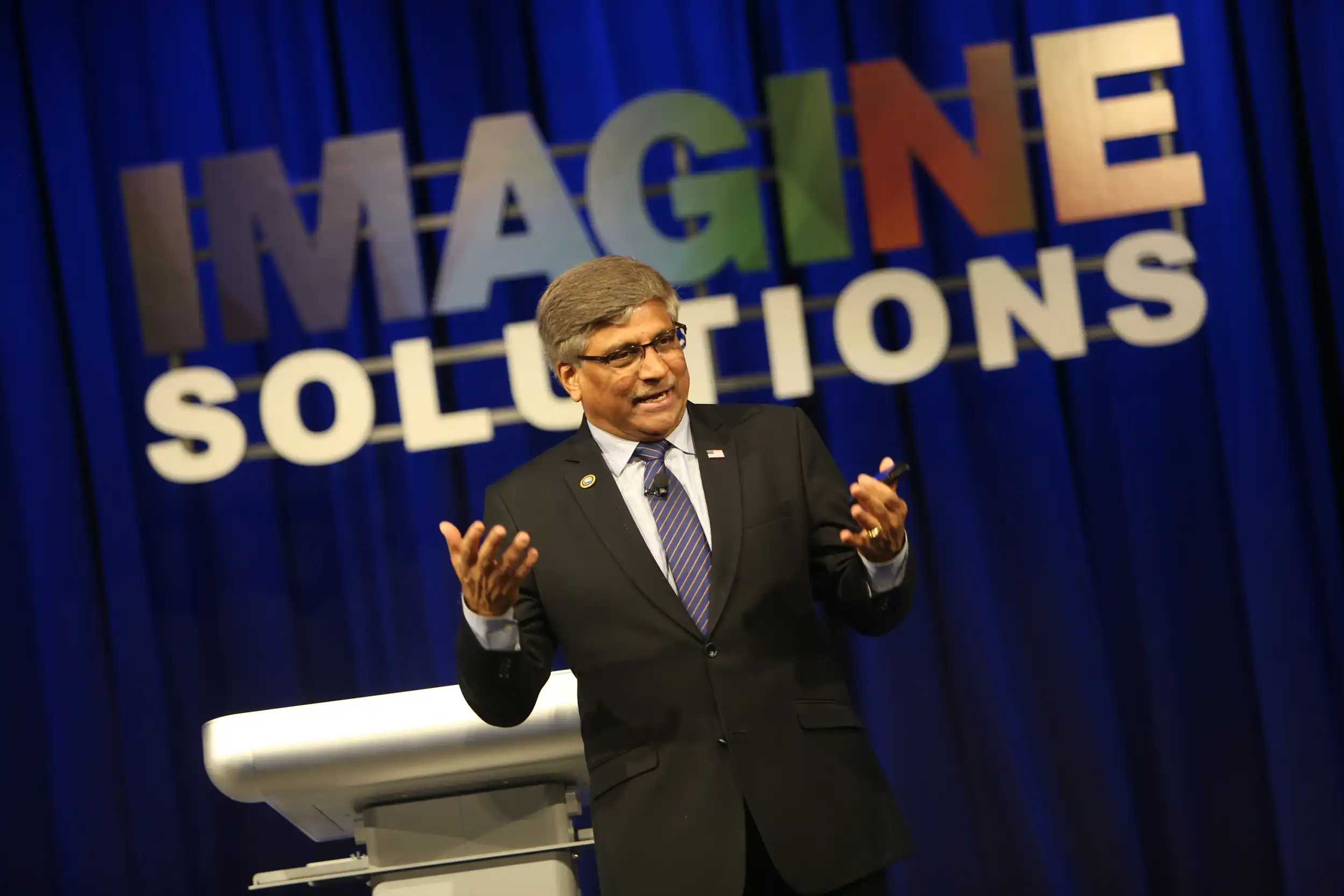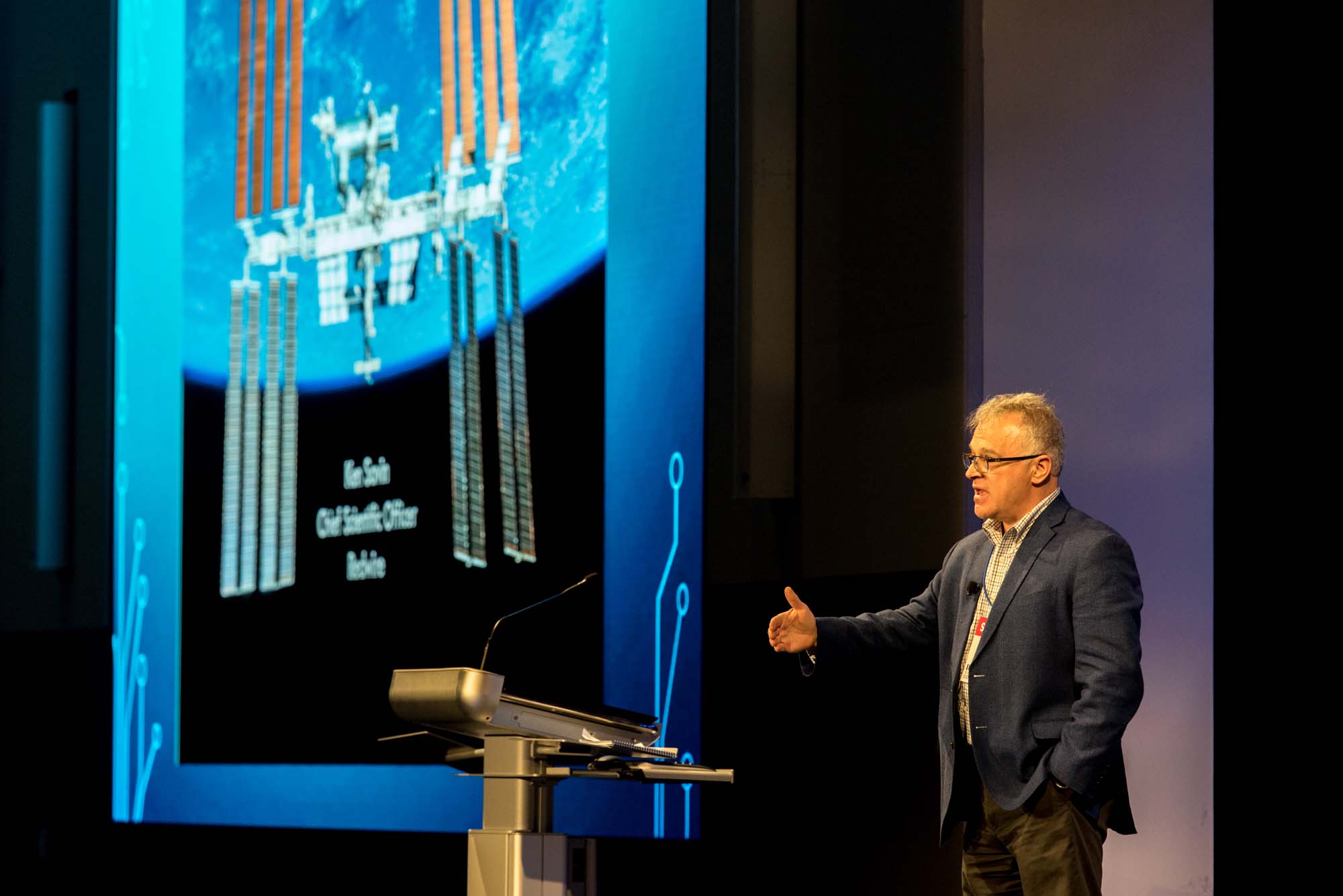Bioengineering via the Creator of the Frugal Innovation Concept
00.00
[Music] [Music] Manu Pros is recognized as a bioengineering genius by the MacArthur Foundation he's the leader of the Frugal Lab at Stanford his lab develops experiments to understand how computation is embodied in biological matter they are dedicated towards inventing building and scaling up Frugal science tools to De democratize excuse me access to science inventing a 50- cent microscope for example please Welcome to our stage Manu prash have fun oh sh so I'm here to tell you about a a
01.02
phrase that I love talking about Frugal science it's going to be about cost you know growing up I was told that the world was divided in developed and developing countries uh and the more that I see it I've started realizing that that framework doesn't really apply the world is divided in hals and have knots I know many of you care about cost uh because that means products will or will not reach a given set of a community that you might care about I've been thinking about this in the context of being able to really cause extreme shift in cost for products uh Randy likes to call this trying to make something out of nothing and I will tell you a few things we have created in that space I teach this class over the last uh almost a decade now and there is just one thing I want you to remember from my talk uh is a saying that one of my students from Sudan taught me he said Manu what you're really teaching is
02.01
something that we have in sudanes and it translates to the pen that does not eradicate ignorance and shame the pen is a symbol of Technology uh and effectively as technologists and people that strongly believe that technology can have uh social impact and change we have to embody that to create sets of technologies that would eradicate ignorance and shame I'm going to give you three examples today in my own work all the way from global Health uh into villages in Sagal to ecological monitoring in the Arctic uh to also science education programs that we run trying to bring these tools to people now to give you a context of this let's first take you out to a field site so at this moment you are in a a site in rural India called kalahandi This is a malaria Clinic it's a one room Clinic they would roughly get between 200 to 300 patients per year
03.01
many of the kids that would walk to this Clinic have falserum which is essentially a death sentence if not treated within the next 5 to 6 days 5 to six days while to even arrive at a health center like this uh would take you between 12 to 24 hours for most of the sites uh that's pray and Durga they spend 10 to 11 hours in a lab and it's very rare to even have a lab like this uh essentially working and they are literally trying to diagnose what kid should get what drug they are making life-saving decisions uh and do this day in and day out the second place that I want to take you this is now in the in the summer in the Arctic uh we were out there uh last year trying to map and measure uh the changes that are happening and you might firstly see that oh there doesn't seem to be some anything common between these sets of problems but by the end of this
04.01
talk I want to convince you that they are deeply connected uh this is the fastest uh warming place on our planet uh effectively the ecosystems that we have will not be there in my lifetime many of the scientists currently believe that we really cannot uh uh reverse much of what's happening and has happened in the Arctic and then the third place I want to take you is just any regular classroom if you were to close your eye and imagine a classroom I don't know whether you will imagine the picture that you see there which is a photograph I took in Ghana uh effectively a billion kids around the world out of two billion total kids live in families that you would think about is less than $2.5 per day and when you start asking yourself what are the tools of creativity that we're providing these kids I would say we're providing them very little and that is half of the talent pool to think about uh in terms uh uh of all the sets
05.02
of problems that we are leaving behind roughly half a billion kids had absolutely no access to any kind of online education this is what that looked like uh for most of the kids so you know this is uh kind of a depressing story uh I lose sleep at night every day with all the positivity and everything and I want you to lose some sleep too uh it is very important to be thinking about these sets of is issues and the fact that the race and the advances in technology are not reaching majority of the people I was one of those kids I grew up in India uh that's the youngest and probably the only photograph I have of my childhood uh and one of the things that I do remember growing up in India was realizing how do you build out of nothing U I remember taking this exam uh in around close to high school where you're supposed to draw microscope but I
06.01
had never seen one and you had to draw it exactly the angle that it was uh in the book uh and one of the things that I kind of almost find laughable now uh that with all the books and all the internet you can provide a lot of knowledge to people you really can't provide experience and that's what you need to really be able to build your own role and your own you can see yourself as a scientists itself so out of all this crisis sometimes uh it can be a state where you feel nothing can be done and I want to tell you that that's not the case I don't know how many of you know the story of how bicycles were invented essentially 1815 there was an eruption uh in Europe that led to a massive famine and most of the horses died and baron Carl Juan dce came up with this notion that he's going to have these two wheels rolling around remember this is 1815 and it's remarkable that as a
07.01
technology that came out I mean of course the famine went away the horses came back but the bicycle still remained there's roughly around a billion bicycles on this planet today and often enough when I think about technology it's the pencils and the Bicycles of the world that I'm interested in so let me give you a few examples of nothing as good as a bicycle but in that direction tools and technologies that we have created uh in being able to diagnose any disease under a tree uh to be able to build a Citizens movement of uh monitoring ecological monitoring in a changing climate uh and probably the most important piece of my work is to give kids a chance to magnify their own curiosity and much of this has to be done as a global first approach you really have to think about a planet as a whole there is no point just trying to uh hold in an infectious disease that spreads so rapidly uh in one place and
08.00
not worry about the rest of the world so it's really important to be thinking about this as planetary scale Technologies and in the past we have enabled and taken on planetary scale challenges with citizens on the front line I don't know how many of you were kids and young kids when operation Moon watch was going on uh when the Smithsonian distributed telescopes around the world primarily because the Sputnik had been launched we had no technology at that moment to monitor satellites in space and that led to the largest citizen science program of that time almost for the 60 years in a row much of that data was actually collected by average citizens and right there in the middle you can see United States Mrs lyd Eisenhower Weiss housewife volunteer sought Sputnik too and actually many of the launches of Sputnik later on that happened were happened through the citizens program far ahead of much of the military complex when they were trying to build satellite trackers
09.01
so you might ask what is the current uh largest citizen Science Program uh that program got shut down uh but that's actually our community health workers and many of the tools that you see here that I work on creating are all focused on what can fix fit in the backpack of one of these very brave community health workers that you see out there I mean much of the reason that we had any control on Ebola was primarily because these community health workers with very little were willing to go household to household knowing fully well that you would actually get exposed and that is the harsh reality of the world even today over the last decade we have created roughly of the order of two dozen tools I don't have the time to talk about all of them they frame in either in the context of global Health uh in the context of ecological monitoring and of course in education and I'll just give you a flavor of two or three of them uh to sort of fet your
10.00
appetite so let's start with Diagnostics under a tree I was a young faculty uh almost 10 years ago I was in Uganda uh and this remarkable gentleman uh reached out when I was running trainings for pathologist on microscopy and he said Manu you should come back when you can do diagnosis under a tree at that time I didn't understand much of what he was saying but he was really talking about pandemics and the fact that most of our Diagnostics technology do not scale to the rapid fire uh increase in infectious diseases that we actually see I took that to heart and even till today when I think about even post the covid era 47% of the world population actually has no access to appropriate Diagnostics that's half the world how are we supposed to believe that what just happened is not going to happen unless we don't even have the tools for half the world to be able to have any basic Diagnostics I'm not talking about uh you know non-c communic able diseases these are curable
11.01
diseases that one or two pills could actually save things that we thought that we almost cured uh years ago and to just put this in perspective uh this is a photograph from one of the villages uh I work in uh this is a mother she's pregnant you can see the children but you can actually also see that the kids are playing on the graveyard of their brothers and sisters this is a very common thing that's done uh primarily because you don't want to forget uh the the kids that you you've lost uh we still lose 600,000 kids just for malaria alone what does it look like to diagnose malaria in the field this is Asha workers on the right uh in India and one of our clinical sites at the border of Mali and Sagal in kedu on the left and effectively you get hundreds of patients coming in and the sets of tools that we have are fairly rudimentary uh malaria at this point uh the the parasite has evaded one of the common diagnostic tools the rdts that are used with a gene
12.00
deletion and at that same time we also are seeing resistance for the common drug that we use and thirdly we have for the first time in Africa a malaria Vector that is an urban mosquito I know many of you in Florida are very well aware of the challenges with mosquitoes uh this would be the very first time there is worry that we would have Urban malaria not just rural malaria so we've been working on these sets of tools and we asked oursel a question in inspired by the manufacturing of how ballpoint pens are made uh during the time of covid we developed and it's funny that the moment I said a ballpoint pen a ballpoint pen fell out of somewhere I don't know how that just happened uh uh we started asking could you do molecular Diagnostics in the middle of nowhere and with some sets of support at Stanford many sets of Gates Foundation U we developed a test that is as easy as if you were run making a cup of tea it requires no electricity uh and uh it's programmable
13.03
we can program it for different sets of primers uh it took a while to build this uh there's a lot of engineering that went in that I'm not going to talk about uh but we were able to with all the support go from my kitchen where I was conceiving the idea with the sets of parts that I found on a Home Depot all the way to actually running a clinical validation study for this to be able to show that everyday people when train can actually run molecular test and the vision that we have for this is not just this being the product because I said that this has to reach every corner of the world for these sets of things to make a difference we are thinking of the manufacturing platform as the product and one of the things that we are building right now is in two container ships an entire manufacturing pipeline for Diagnostics all the enzymes all the biologics the gadgetry everything put in we have our first field partner in Sagal uh but one of the goals is to really
14.00
show that you can do distributed manufacturing of programmable Diagnostics you know I mentioned a lot of things about uh malaria I'm not going to have too much time to tell you about the technical aspects but you saw incredible things AI can do for the very first time now we've built an instrument that can do malaria Diagnostics in completely real time so what you're watching on the screen is a finger prick blood from a patient being scanned uh this is driven by essentially a cell phone charger and in real time it's identifying individual parasites so what you saw Durga and PR doing in the clinic now we can do in an autonomous manner dur and PR in 30 to 45 minutes can see between 3 to 5,000 cells red blood cells in a single finger prick there is roughly around 20 million cells and the Machine is able to really read out a massive number of them to get very high fidelity Diagnostics out in the field I'm very excited about these sets of
15.01
tools because they they tell a different Narrative of AI and the fact that these tools are programmable we can program this for Cle cell anemia we can program this for TB we can program this for sexually transmitted diseases to really be able to give these sets of tools to the Frontline workers that we care about I just returned from Liberia and one of the things that we are starting to realize is the power of what does it mean to interact and interface uh with Frontline workers both the power that they have the passion that they have only if they are given the right set of tools in the few five minutes that I have I want to take you now a little bit back to the ocean and tell you why these two problems are connected you know one of the things that I said in the first phase was this idea of planetary scale measurements this notion that we need to measure viruses and pathogens in human populations and animals in in our sets of communities globally the same
16.01
actually applies for being a measurements to be able to be made out in the ocean every single parameter in the context of climate that you think about and the kinds of models that we make we don't have enough microbial data to truly understand where does much of that come from very simply oceans sequester so much carbon uh but we don't have any metric of where to put the biological pump which is the primary mechanism for this carbon sequestration much of the time when I go out to see it costs me 50 to $60,000 per day on one of my Expeditions most of these Expeditions last 45 days or more you can see an astronomic and you know I'm really proud of the fact that as taxpayers were able to support programs like this but it's not enough we will not be able to measure the pulse of the planet with that kind of an approach so we flip the table around and we ask who else is out there at se how many of you sail here I'm curious a few
17.02
of you there is at this very moment between 10 to 15,000 Sailors at Sea open Waters out there exploring the oceans uh this happens to be one of our volunteers uh he does sail with a chicken uh and yes the chicken is called uh uh I know you you've all seen Moana so but this is this is for Real uh this is G and one of the things we started asking is could we retro these boats with lowcost tools to be able to make biological measurements that led to this is Lake chilika uh this is one of the uh protected sites uh this was one of the first machines we built that allows us to now do microbial uh measurements out at Sea in hands of essentially fishing communities uh and then the tool that you saw has had its own Evolution I have one of these sets of tools right here uh it cost us a couple hundred to make it's completely open Source uh and then you
18.01
start essentially measuring the types of life that you see in aquatic ecosystems we posted all of the inerts of this on the web and something really remarkable happened within 6 month that project became that hundreds of people around the world started building these tools started posting pictures I call this the ecogs of the world not the Instagrams uh and much of this now has led to tens of millions of data sets that have now been collected all across the world and this community is starting to grow and again it's a testament to thinking about a citizen's first approach to measurement I'll give you another example since I brought up mosquitoes uh here is one of The Graduate students just the same problem that I said about the ocean actually applies to mosquitoes I don't know how many of you know how many mosquitoes are there in Florida does anybody know you know it's just a lot is is all we got and the the reason that that's the answer is because we're still using
19.01
this technology this is how Ronald Ross discovered malaria picking up mosquitoes a tweezer at a time looking under a microscope to identify what species we asked how to flip the script in Frugal science on that and I'm going to play this musical score it's not as lovely as what you just heard but I still want you to hear it do you all know what you're [Music] hearing this is an orchestra of the 40 most deadliest mosquitoes on the planet we went around the world we collected these Acoustics and the reason I'm playing this is you can tell the notes apart using machine learning we were able to build a cell phone detector that can essentially now detect species just from a buzz of a mosquito you know half a second of a buzz that's needed and then again you know going back to where does this tool belong we've been training folks across the this is a village in Madagascar that we
20.01
work in where the kids are buzzing around and of course they are the ones that are going and mapping what's happening in their Villages I'm going to end this talk by something that I find the most important uh which is thinking about the young kids because to me what matters most is not what I would create but what I leave behind in the context of them thinking about the world that we're giving them and that really is all begins with curiosity so we saw all these stars out in the galaxy and you might wonder that everything to explore is out there far away but in fact there are more microbial species here than the gala stars in our galaxy and maybe 99% of all of that life is actually still undescribed almost 10 years ago we built a tool literally using a flat sheet of paper to put together a microscope you know I was excited about the idea of democratizing microscopy we put a the price point on it that for a price point
21.00
of $1 anybody in the world should be able to see a bacteria we actually did that uh this is the footage that's from one of the microscopes it doesn't require any batteries any cell phones if you have a cell phone you can collect data on it we published the paper as an academic group I was quite proud when Bill Gates tweeted about it it was very interesting he wrote an origami microscope question mark interesting I was hung up with the question Mark why did he put a question mark it's like you know I I showed it and what I realized is that maybe in some subversive way he was challenging us he was challenging that as an academic group we had done that and at that moment I decided I'll start a program we said we will ship 100,000 microscopes to any kid in the world at this point we have taken that program to now 2 million kids this is the world's largest microscopy based program in the world and one of the power of this is you know when you think about your role in all of this I love
22.01
these parents they're not sharing the microscope with their own child it's very important be this parent because you will realize that they embody what you love when we share our expression of Joy with something that's really what one of the P kids pick up at this point it's one of the largest sets of programs 150 countries around the world um we run massive workshops globally uh and again you know thinking about in Fairly challenging conditions refugee camps camps prisons libraries anywhere that you can see and all the way to uh you know higher education and one of the things that we're very proud of is I'm already out of time so I'm just going to end with uh we've been building programs with governments we've been translating all of this work uh on many sets of languages uh there's a lot of academic work that happens on this uh there are sets of these are sets of group associated with plant diseases uh you see G again exploring uh the oceans uh
23.00
all the way in the Amazon many new species have been discovered with these sets of tools there are many biodiversity program so we have a program in Congo essentially looking at diarrheal diseases in gorillas uh mosquito surveillance programs Fisheries uh one of the largest programs uh in Iraq right after the war Muhammad that's in that corner started the science club in Iraq using fold Scopes all across Iraq essentially starting to build what many of these kids had lost and I want to end with a personal story of uh Mo Pandi rajin here he's one of the most prolific F scope user after a couple of years of release of f scope he crossed me in terms of the documentation this one single individual one single individual four years of work engaging with the community has trained more than 95,000 kids across the country one single individual so when you remember and think about this after English Tamil is the most spoken language on our
24.00
platform associated with this I did he sent me this number and I didn't believe it and you know when you don't believe somebody you go on social media so I went on social media this is just last week him exploring and sharing what he does uh and again you know much of this work is about empowering others uh to be able to share and bring much of that joy to everyone because unless we bring everyone into the fold of what technology can actually do you would never get solutions that truly solve Global problems um I'll end here I wish we had more time but one of the things that I'm going to try to do is set up some of these demos I would love for any of you to actually build and play with the microscopes itself uh but I am here for a conversation so [Applause] [Music] please

